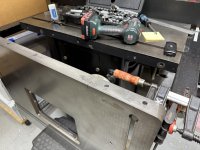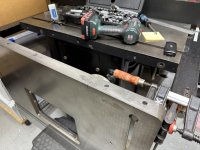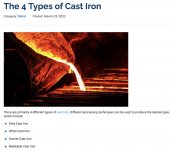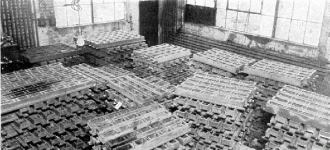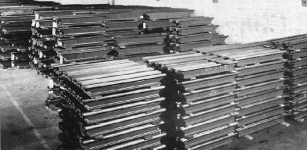Back in the 1980's I was a cost accountant at a foundry. We made high volume items like small engine crankshafts and automotive front end parts. A lot depends on what steel you melt. We mostly melted chopped up I beams so we could keep a tighter spec range than melting crushed up cars.
Gray cast iron is very brittle-it is just poured metal with no heat treating. We did not make any of that, but this is commonly found as farm tractor weights. Malleable cast iron is cast into parts then is heat treated in an gigantic toaster oven then cooled. It could then be water quenched or oil quenched. Basically the heat gets all the molecules to line up then quenching locks it in place. There is a lot of art and science in this that I do not know. Ductile is chemically heat. So while the steel is bubbling at 2800 degrees F molybdenum and other minerals are thrown into the ladle pot. This is usually in a paper bag and the whole bag is thrown in. The steel is churning around enough that this gets mixed up in the whole batch.
Our melt deck was continuous pour. We had 4 ladles with steel being continually dumped in them. A fork truck would come up, the ladle would tilt and fill a ladle on the fork truck. Then the fork truck would take and pour it into the molds. We used cope and drag patterns (top and bottom negative patterns) and the mold was made out of silicone sand held together by oil and packed into place by giant shakers. The cores were interesting (think of the hollow place inside an exhaust manifold or engine head). Cores would keep the steel out and then could be beaten out once the steel set so cores let you make complicated parts.
If you look at your car's intake manifold, you may see a pattern of styrofoam in it. That was a new technique back then. You make a positive pattern of your part out of styrofoam with sprue attached, and pak it in loose sand. Then when you pour the hot steel in, it evaporates the styrofoam which escapes through the loose sand, and the steel fills the cavity. Very good for experimental parts as it is easier to carve a block of styrofoam than make a negative cope and drag pattern out of stainless steel. Wood patterns were also used but only for low production since the sand would wear the wood pattern out. Remember when a Pattern Maker was a high skill trade?
Everything was electric. The melt ladles were wrapped with a coil of copper pipe-maybe 2"? and water would run on the inside of the pipe to keep it cool and electricity would go through the outside of the same pipe. This caused a magnetic field and allowed you to just keep adding steel as you poured more into the fork truck ladle. It was explained to me not to fall into one of these melting deck ladles because the moisture in my body would explode and take out a city block. We would pre-heat the steel before dropping it into the ladle to avoid this moisture problem, but once a pipe that must have been mashed on both ends and had water it it went into the ladle. It blew the ladle off of its hydraulic tilter. A can of coke would have destroyed the ladle as the moisture goes to the bottom them explodes.
As an accountant, I saw the writing on the wall and got out before they went under. This was in Central Illinois where a nuclear power plant was built and the electrical rate increases were killing us. We could win or lose a contract on one/hundredth of a cent so not a lot of profit margin.
The shakers (they shaked the castings from the sprues-think of a plastic car model with the sprues and car parts)
were so noisy because they just vibrated everything apart. I could not make more noise with a stack of oil pipeline and a 12 lb sledge hammer. We were an EPA dump with all of that silicone sand and just had too many things against us. It was sad to see that part of America die.

